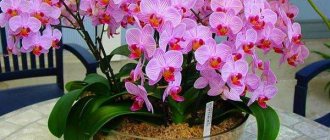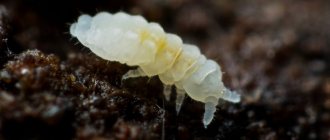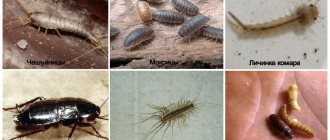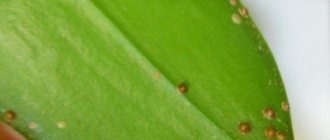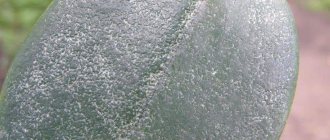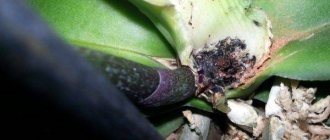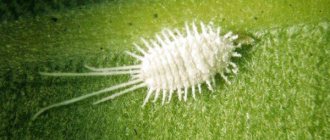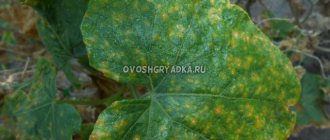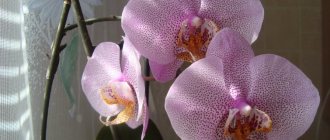Indoor orchid species are sometimes attacked by various harmful insects. White pests are most noticeable on these plants. All of them are small in size, so inexperienced gardeners mistake them for white and fluffy bugs.
In fact, these are different types of insects that can cause irreparable damage to the orchid or be practically harmless. It is important to know why white fluffy (hairy) bugs appeared in the soil and on the leaves of the orchid and how to get rid of them in order to protect the plant.
Where do the white bugs on an orchid come from?
The ways they appear can be as follows:
- Moving from garden plants when growing orchids outdoors;
- Infection of healthy plants by pests from a recently acquired flower;
- Infection of plants through planting substrate.
Harmful insects can settle on an orchid if it is placed on a loggia or kept near an open window. But such infection is very rare and is mainly caused by flying pests.
Most often, insects enter an apartment with a recently purchased flower.
Sometimes they can also get on an orchid with a purchased, poorly treated substrate. The white bugs that appear on the orchid come in different types. Most often these plants affect:
Mealybug
Whitefly
Fools
- Mealybug - has a length of 6 to 10 mm, so it is clearly visible on the leaves of the orchid. It has an oval, worm-like body covered with a white powdery coating. This pest quickly moves from one plant to neighboring ones;
- The whitefly is a flying insect about 2 mm long. It can cover quite a long distance and fly from one plant to another. Often whiteflies fly into an open window and land on an orchid growing on the windowsill. Pests accumulate on the underside of leaves, where they lay eggs. They are very prolific and quickly cover the entire surface of the orchid leaves;
- Poduras are skinny little bugs in an orchid that live mainly in the substrate. They can be seen extremely rarely on leaves. Due to their small size, they become noticeable only after breeding in very large numbers.
Prevention of infection
To prevent white bugs from appearing in your orchid, you must do the following:
- Inspect a new flower for white honeydew, egg masses and adults.
- Use high-quality soil for planting.
- Timely collection of all dried leaves, buds and stems.
- Creating favorable conditions for maintaining a flower - establishing the correct temperature, frequency of watering and fertilization.
The presence of even one small bug is a possible start to serious problems for the crop, so it is important to periodically conduct a visual inspection of orchids, especially in the off-season and in winter.
Why are white insects dangerous on a plant?
Mealybugs are a dangerous pest that is difficult to control. Adults and larvae feed on the sap of the plant, causing its leaves to curl and die. If Phalaenopsis orchids and other species are not treated for mealybug, it will quickly multiply and destroy the plant. This dangerous pest cannot live on every plant. This insect rarely settles on healthy flowers.
If the orchid is weakened and its immunity is reduced, the pest attacks the plant and multiplies on it in large numbers.
The whitefly also feeds on the sap of the plant and can very quickly ruin its appearance. Being on the reverse side of the leaf, adult insects and larvae pierce its surface and drink the juice. They are also known as carriers of various viral diseases.
A plant damaged by whitefly often dies, since the fight against many viral plant diseases has not been developed today.
Podurs themselves do not cause damage to plants. They live in the soil and feed on organic matter, which is present in abundance there. In a pot of orchids, there are a lot of these insects when the flower is not watered correctly, when the bark, which forms the basis of the substrate, begins to rot and decompose. Thus, poduras are a kind of signal to the gardener about improper care of the plant. Below are photos of pests of Phalaenopsis orchids and other species:
Mealybug
Whitefly
Fools
Possible places and causes of parasites
On the entire surface of the plant. At any stage of development, the insect is very mobile and moves well in any direction.
Interesting! A healthy orchid secretes pheramones that repel pests. Weakened specimens are attacked.
The most favorite habitats are leaf axils and buds.
Young shoots with a fragile skin are easily damaged and are most suitable for obtaining juice. Mealybugs willingly colonize secluded areas at first. Some types of white beetles parasitize in the soil, damaging aerial roots.
What to do if there are white bugs on an orchid
Many gardeners, when they discover white bugs on orchids, try to destroy them using folk remedies. These products are prepared on the basis of natural ingredients and do not harm plants, people and animals.
There are several traditional methods for controlling pests of indoor plants:
- Oil solution;
- Horsetail infusion;
- Garlic tincture;
- Alcohol-soap solution.
When preparing an oil solution, 2 tbsp. Add spoons of olive oil to 1 liter of water and mix thoroughly with a mixer. The orchid is sprayed with this solution until the pests are destroyed.
Horsetail infusion repels harmful insects. To prepare it, take 100 g of dried horsetail, pour in 1 liter of boiling water, leave until it cools and filter. Then the resulting liquid is used to treat the orchid against pests.
Garlic tincture is the most popular method of combating harmful insects. To prepare, take 5 cloves of garlic, finely chop them or crush them, pour in 0.5 liters of boiling water, leave for 5 hours, and then filter. The resulting liquid is applied to the orchid leaves in the area where pests are concentrated.
To obtain an alcohol-soap solution, dissolve 15 g of laundry soap in 1 liter of warm water, and then pour in 10 g of alcohol. The solution is applied to the leaves in places where harmful insects accumulate.
Folk remedies are not always effective and produce results only in the presence of a small number of pests.
If there is a large accumulation of them, these products will not help to completely destroy insects; it is recommended to use only purchased pesticides. Insecticidal preparations (Aktellik, Aktara, Fitoverm) completely destroy white bugs on orchids.
When infested with mealybugs, it is necessary to remove adult insects from the surface of the leaves. This is done with a cotton swab soaked in alcohol. The plant is then sprayed with an insecticide. After 7-10 days, the treatment is repeated to destroy the larvae of harmful insects.
If infested with whiteflies, it is advisable to place the orchid in a plastic bag and then spray it with an insecticide so that the whiteflies do not fly away. Since they move freely through the air, neighboring plants, as well as the window frame and window sill, should be treated.
Poduras do not cause significant harm to orchids . Usually, when watering is corrected and the soil is well dried, they disappear on their own. If there are too many of them, you can treat the surface of the soil in the pot with insecticidal preparations.
Chemicals to control mealybugs
It happens that the use of folk remedies does not bring the desired results, then flower gardens resort to chemical ones. All chemicals whose action is aimed at controlling pests are called insecticides. They are divided into the following types:
- Contact - the action of such insecticides is carried out by penetration into the pest’s body through the skin. Due to its strong effect, plants treated with this product do not need to be re-treated. While the flower is being treated with a contact preparation, the plant must be protected from sunlight, otherwise this may lead to yellowing of the leaves.
- Intestinal - such insecticides enter the parasite’s body through the mouth.
- Systemic - the effect of such drugs is that when the chemical gets into the root system and leaves of the orchid, it makes the plant sap poisonous to pests. Such products are usually sold in the form of a spray, so in order not to overcool the plant, you need to carefully study the instructions for use before use.
Preparations for combating scale insects can be made from oil. Such products should be applied only to areas affected by the parasite, otherwise harm to the plant may occur. Leaves coated with an oily preparation should not be left in the sun.
Adult mealybugs are weakly affected by drugs
Preventive measures
Pest control consists not only of their destruction, but also of following certain rules to prevent the appearance of bugs on orchids. When growing these flowers, it is very important to adhere to the following preventive measures:
- When purchasing a new orchid, you must quarantine it away from other plants. It is necessary to monitor it daily, and if pests appear on the leaves, immediately begin treating with insecticides;
- Buy soil only from trusted suppliers . It must be treated against fungal infections and pest larvae. When buying soil for orchids in a store, it is better to steam it before use or heat it in the oven at a temperature of 80-85ºC;
- Do not take orchids out into the open air in the summer, as the risk of pests attacking indoor and garden crops is very high. It is also better not to leave flowers near an open window;
- Proper care of the plant will ensure its viability and high immunity; pests rarely settle on such a plant;
- Daily inspection of plants will allow you to timely detect pests before they have time to multiply and completely destroy them.
Why might they appear in the ground?
To a large extent, pests reach the plant through the soil. After all, one way or another, the soil contains quite a lot of different organisms that initially live there because of the comfortable environment for reproduction and existence.
Therefore, when purchasing soil for a plant, you must be prepared for the fact that you will have to deal with pests located there. Moisture also actively helps bugs and midges to reproduce, so you should not overwater the plant, because this can only provoke pests even more.
Other pests of Phalaenopsis orchids and their treatment
In addition to the pests already mentioned, the following can settle on orchids:
- Scale insects are dangerous pests that are not easy to get rid of. Adult insects under their shell are practically invulnerable to pesticides. Therefore, when scale insects are detected, adult insects must be removed and destroyed. The plant is then treated with insecticides to kill the larvae. The treatment is repeated several times with an interval of 7-10 days;
- Aphids are a common pest of orchids. These insects are very prolific and quickly form large colonies. They feed on plant sap, causing leaves to curl and die. They are also dangerous because they carry various viral and fungal infections, which kill the plant even faster than the pest itself. Spraying with insecticidal preparations helps well against aphids;
Shchitovka
Aphid
Thrips
Spider mite
- Spider mites are sucking insects that feed on plant sap. It often attacks orchids. It is difficult to notice due to its small size, but the cobweb coating on the back of the leaves is very visible. First of all, the mite infects young leaves and growing points, which can cause the orchid to die. It is destroyed only with special preparations to combat harmful arachnids. Of the listed funds, this is Actellik. The plant is treated with it at least 3 times with an interval of 7-10 days;
- Thrips are harmful flying insects that attack not only the ground part of the plant, but also its roots. If they are detected, the plant must be isolated from the rest and treated with an insecticide until complete destruction at intervals of no more than 10 days. It is also recommended to treat the substrate in the pot, as thrips can hide in it and damage the root system.
Establishing the type of insect and general control methods
The type of pest that is expected to be controlled can be determined by its appearance:
- If brown-yellow irregularities appear on the stem, the flower is infected with scale insects.
- Deformation and curling of the leaves suggests that most likely there are aphids or nematodes in the soil of the flower.
- Many dark, black spots on the orchid indicate that it is susceptible to thrips.
- If a plaque is found on a plant that looks like a spider web, then it may be infected with a mite.
If white furry bugs or other individuals appear that jump, this is not a good sign; you should start fighting immediately. If you suspect a plant infection, you need to remove the pot to a place where there are no other flowers and only then begin pest control.
It is possible that it will be possible to get by with mechanical elimination of parasites. A careful examination of the orchid, collecting detected insects, cutting off yellowish leaves and withered shoots, and immersing the flower pot in water will undoubtedly give a favorable result. However, 100% pest removal cannot be achieved using this method.
Please note: Both folk and chemical remedies will give results. With their help you can remove insects and larvae, which guarantees the best therapy for the plant.
Chemical substances
Often, only chemicals are ready to restore the health of the beloved flower.
However, such funds should be used wisely and very carefully. It is better to give preference to products with a low threat class 3 or 4
And only in extreme cases choose a drug of class 2 threat.
These substances must be used as intended. There is no need to neglect safety measures and the recommended dose. If there are white bugs in an orchid, gardeners with experience advise starting treatment with the following substances:
- Fitoverm;
- Confidor;
- Aktara;
- Inta-Vir;
- Tanker.
In case of thorough processing, it is recommended to use more toxic drugs:
- Aktellik;
- Karbofos;
- Vertimek.
With their help, you can exterminate skinny little bugs in an orchid at home.
Folk and biological remedies
Folk remedies are gentler. They are used if white bugs and other pests appear on the orchid.
Liquid with soap:
- In 1000 ml. dilute water with 1 tbsp. liquid soap or regular soap, which should be grated in advance.
- This substance must be used to thoroughly wash the entire stem.
Tobacco extract for insects in orchids:
- Pour 35 grams of tobacco dust into 1000 ml. water. Let the consistency sit throughout the day, stirring the ingredients from time to time.
- Strain the solution and spray the orchid with it.
Onion extract for pests:
- Grate a medium onion until liquid-like and add hot water.
- Leave this solution for about 8 hours and spray the leaves and stem for about 5 days.
Biological preparations if orchid diseases appear:
- Bicol;
- Bitoxibacillin;
- Lepidocide;
- Verticillin;
- Aversectin C;
- Nemabakt.
If insects appear on orchids, experienced gardeners can tell you how to fight them.
Types of insect pests with photos
Aphid
Aphids are small black or green bugs. You can see them with the naked eye. Typically, aphids appear on young green leaves on the reverse side and can often parasitize the sprouts and stems of orchids. This insect is dangerous because it secretes a specific substance that leaves a sticky coating on the surface of the flower.
If aphids leave their marks on the leaves of an orchid, they quickly become deformed and die. This pest sucks the juices from the flower and destroys its structure. Aphids are also carriers of various fungal diseases.
Spider mite
This type of pest is dangerous because in the early stages of its appearance it is almost impossible to notice. First, a thin film appears on the flower - a cobweb. It envelops the leaves, stem and shoots of the orchid. You can notice the cobwebs when processing the flower (often when spraying).
If spider mites appeared on your pet a long time ago, then black spots appear on the leaves, or the leaves turn yellow, become deformed and dry out. This type of parasite loves young and green orchid leaves. Like aphids, spider mites are carriers of various fungi. If the orchid begins to turn black, then at this stage it is very difficult to save it.
Thrips
Thrips are small insects, mostly dark in color. The insidiousness of this type of pest lies in the fact that in the initial stages of flower damage, they are almost impossible to detect. Thrips often hide in the soil where the orchid grows.
The presence of thrips is indicated by small black dots on the leaves, as well as a thin film on the stems or shoots of the orchid. Thrips feed on the sap of the flower and also damage the roots of the orchid and its stem.
Springtails
This type of insect often appears after watering a flower. These are small, skinny grey, gray-brown or gray-white pests that are mainly found in the substrate where the orchid grows, but can also appear on the leaves. These insects prefer soil that contains moss. They love moisture, which is why they appear after watering.
Unlike previous pests, springtails (scientific name for springtails) are not located somewhere in a specific place, but move throughout the plant. In appearance and behavior, springtails resemble animal fleas. Basically, these white parasites infect the roots of the orchid, preferring to live in younger plants.
Nematodes
These are small worms, mostly light in color. However, the orchid is affected by transparent nematodes, which makes it very difficult to fight them, because in the initial stages they are very difficult to detect. These pests often attack the roots, stems, and leaves of your pet.
How to determine that an orchid has been infected by nematodes? It's very simple. The first sign is that the orchid is stunted in growth; the leaves of the flower immediately grow in an irregular shape, and light-colored spots and grooves appear on them, which then darken. Swellings and dead areas appear on the roots of the orchid.
Butterflies
We are accustomed to the fact that butterflies are harmless and beautiful insects that are pleasing to the eye. However, these insects can also cause harm to plants. Let's talk about two types of butterflies that most often infect orchids - leaf rollers and moths.
The leaf roller is a moth that is predominantly yellow with dark splashes of color or a light brown hue. Basically, leaf rollers eat the upper part of the flower or its leaves; less often, the roots and stem of the orchid are damaged. The moth prefers to eat the tops of young orchid stems and leaves.
The appearance of a moth can be detected by the presence of a white film on the ground where the orchid grows. If you lift this film, you can see small caterpillars; sometimes they crawl to the base of the leaf blade of the plant. Unlike previous pests, moths strike orchids in the warm season, mainly late spring and summer.
Shields
Scale insects are an insect that secretes a specific substance (wax), thereby forming a protective shell “shield” over itself. It is very easy to determine the presence of this pest on an orchid. Small growths and tubercles form on the flower. It is under them that scale insects hide.
These insects feed on the sap of young orchids, which significantly slows down the growth of the flower. Scale insects give particular preference to orchids with dense leaves. Scale insects also love flower stems.
Signs of defeat
It is easy to determine that an orchid is infested with pests by its white fluffy coating:
- leaves, peduncles, flowers and buds will be dusted with white fluffy dust and severely deformed;
- large colonies of bugs appear more often where the skin is thinner;
- the phalaenopsis orchid needs access to light to the roots, so it is grown in transparent pots, through the walls of which you can see white bugs in the ground;
- leaves and peduncles are covered with sticky honeydew;
- white bugs love tender young orchid leaves, so the colony can be located at the growing point;
- feeding on the juice of the flower, the bugs release toxic substances into the pulp of the leaves;
- When replanting an orchid, white fluffy lumps are visible in the soil.
Signs of an orchid being affected by a mealybug
How to get rid of it: step-by-step instructions
The method of getting rid of pests depends on the type of parasite and the degree of infection of the orchid. In some cases, folk remedies help, in others you have to use chemicals.
To save a plant from pests, you must:
- Isolate the orchid from other flowers.
- Carefully inspect the plant and remove any parasites found.
- Cut off damaged areas of greenery, sprinkle these areas with crushed coal, and treat with an antiseptic.
- Place the container with the flower in water for a few minutes. This will get rid of insects that float to the surface.
- Wipe the flower with a sponge dipped in soapy water. For varieties with dense foliage, you can use alcohol, the main thing is not to burn the green mass during this treatment.
- Replace the topsoil or the entire substrate. In some cases, a pot change is required.
Next, if necessary, treatment should be carried out with one of the chemical or biological agents.
